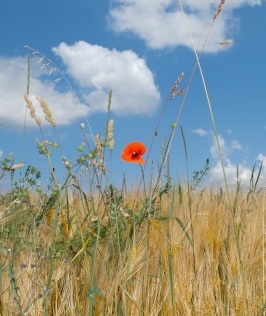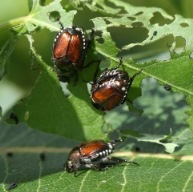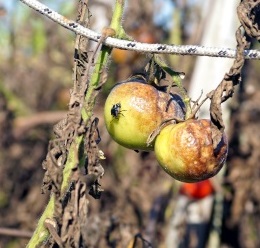Pests & Weeds
Problems with Pests
Look at a field of corn, and it appears to be just corn. But the corn shares the field with other living things—plants, animals, and microbes. Crops are part of an ecosystem of living and non-living things.
Some of a crop’s field mates don’t affect the crop at all. Some can be beneficial, while others can be downright dangerous and even wipe out an entire crop. They are pests—weeds, damaging insects, and disease-causing microbes.
Weeds
 There’s no such thing as a weed in nature! However, we think of weeds as plants growing where we don’t want them. As an example, a rose bush in a garden isn’t a weed but if it was growing in the middle of a cornfield, it would be a weed! And, by their nature, weeds are survivors.
There’s no such thing as a weed in nature! However, we think of weeds as plants growing where we don’t want them. As an example, a rose bush in a garden isn’t a weed but if it was growing in the middle of a cornfield, it would be a weed! And, by their nature, weeds are survivors.
Weeds can outcompete crops because they have one or more of these qualities:
- Produce lots of seeds, which often can survive buried in soil for a long time and grow when conditions become favorable,
- Have roots that spread quickly,
- Adapt to sites that have been disturbed by people, such a plowed fields or vacant lots.
They cause problems because they:
- Rob crops of light, water, and nutrients,
- Grow faster than crops and crowd them out,
- Can produce certain chemicals that are toxic to crops or grazing animals.
But the same plant not in a garden or farm field can be beneficial. A “weed” can:
- Hold soil in place and enrich it with organic matter,
- Provide habitat for wildlife,
- Produce nectar for bees.
Insects
 Different pests can become problems at different times of the growing season, depending on the pest’s – and the crop’s – stage of growth. Examples are:
Different pests can become problems at different times of the growing season, depending on the pest’s – and the crop’s – stage of growth. Examples are:
- Seedcorn maggots spend the winter in the soil, ready to burrow into soybean seeds after spring planting. Soybean aphids are later, as they suck the juices out of soybean leaves.
- Japanese beetles can be found throughout the season chewing on leaves.
- Grasshoppers can be a big problem late in the season, especially in dry years. They feed on the soybean’s leaves and pods.
Disease-Causing Microbes
Crop diseases can be very harmful to crops and yields. Examples of diseases include sudden death syndrome, stem rust, and blossom end rot. They can occur if all three of these factors are present:
 A plant is susceptible to the disease-causing organism(s),
A plant is susceptible to the disease-causing organism(s),- There is a pathogen (organism) present to infect the host, and
- There is a proper environment for the crop and pathogen to grow.
Controlling Pests
Controlling pests is challenging. But agronomists love challenges, solving complex problems. To deal with pests, they map out a plan that begins with trying to prevent the pest in the first place. They use their knowledge of pest biology and habitats—where they live. When agronomists need to control a pest, they make decisions that will have the least effect on the farmer’s budget, people, and the environment. In “agronomy-speak,” that is called integrated pest management, or IPM for short.
View and download the related educator activity:
Chapter 3: Pests What's the Problem? - A Public Service Announcement

